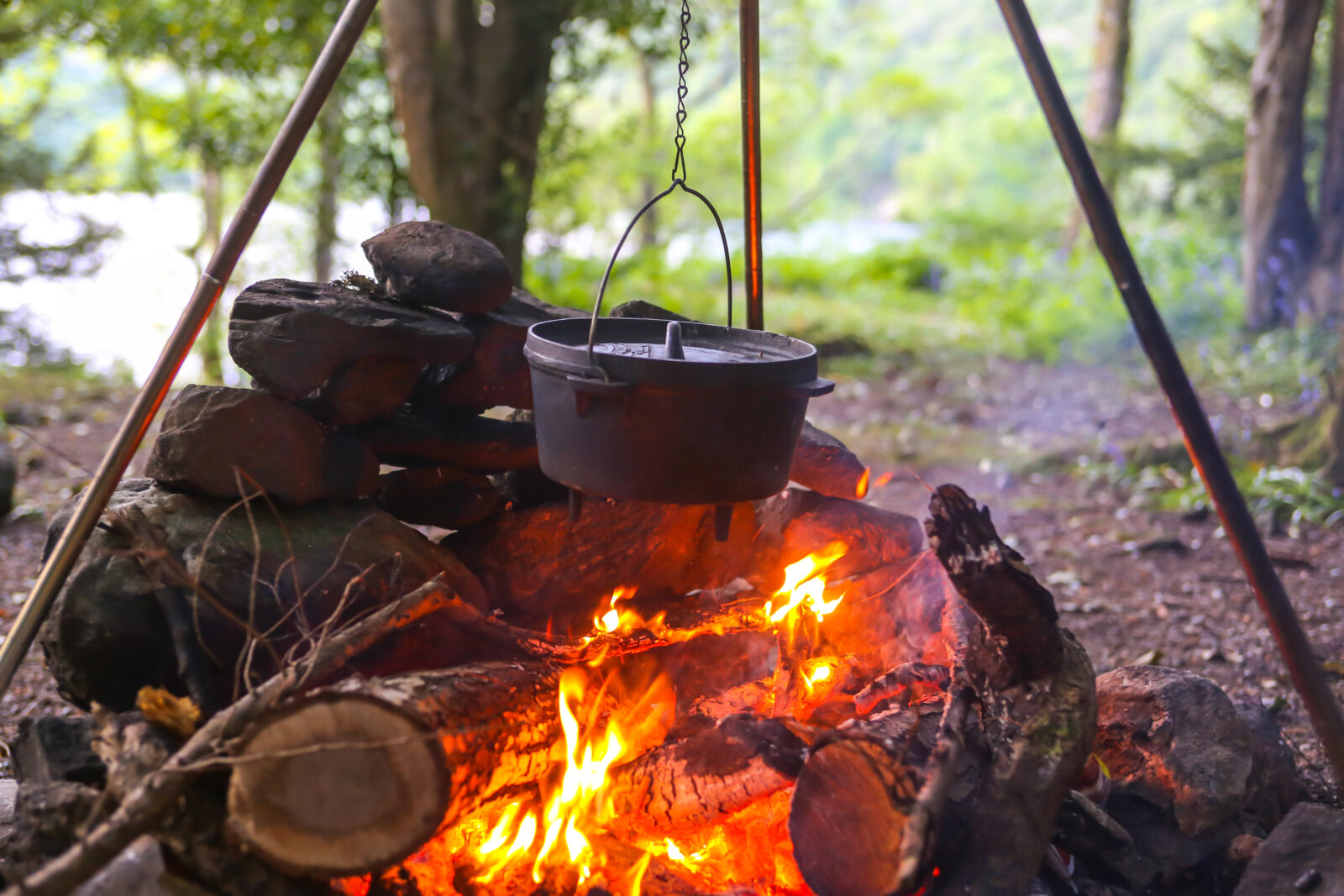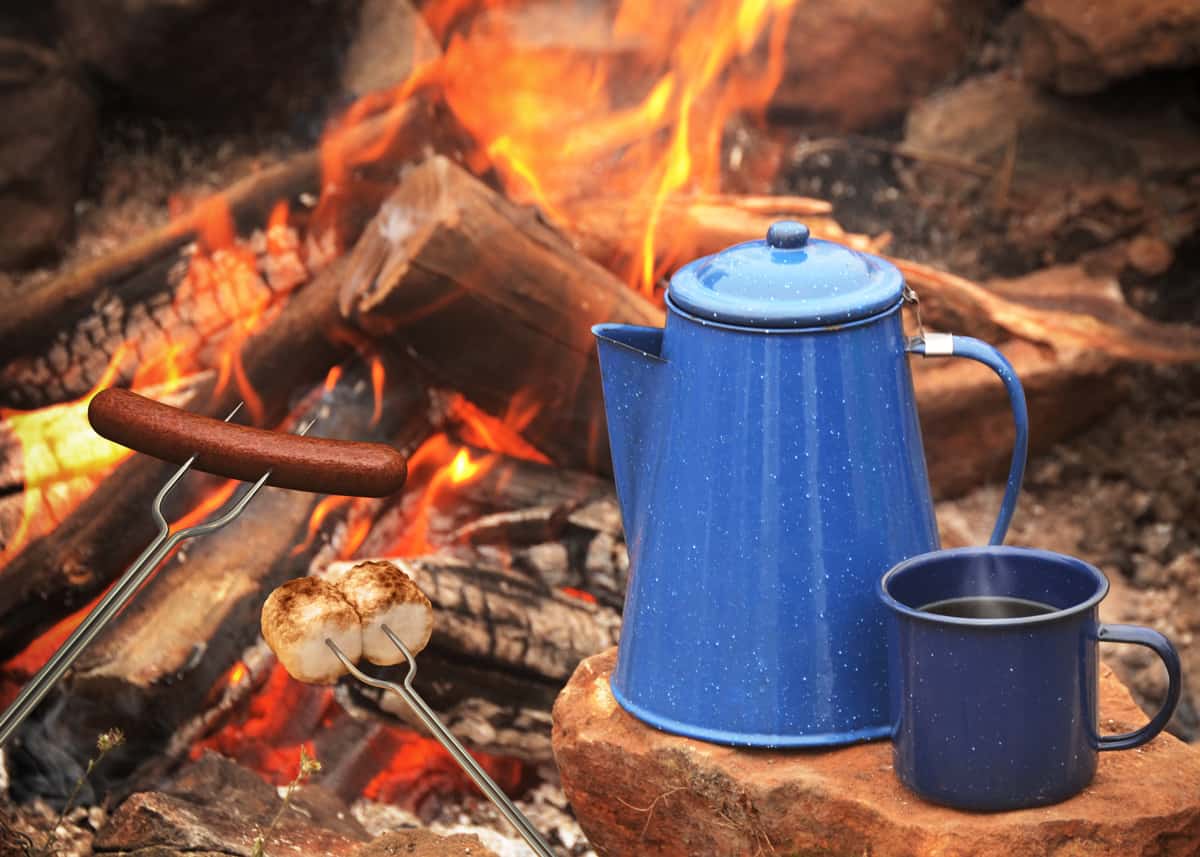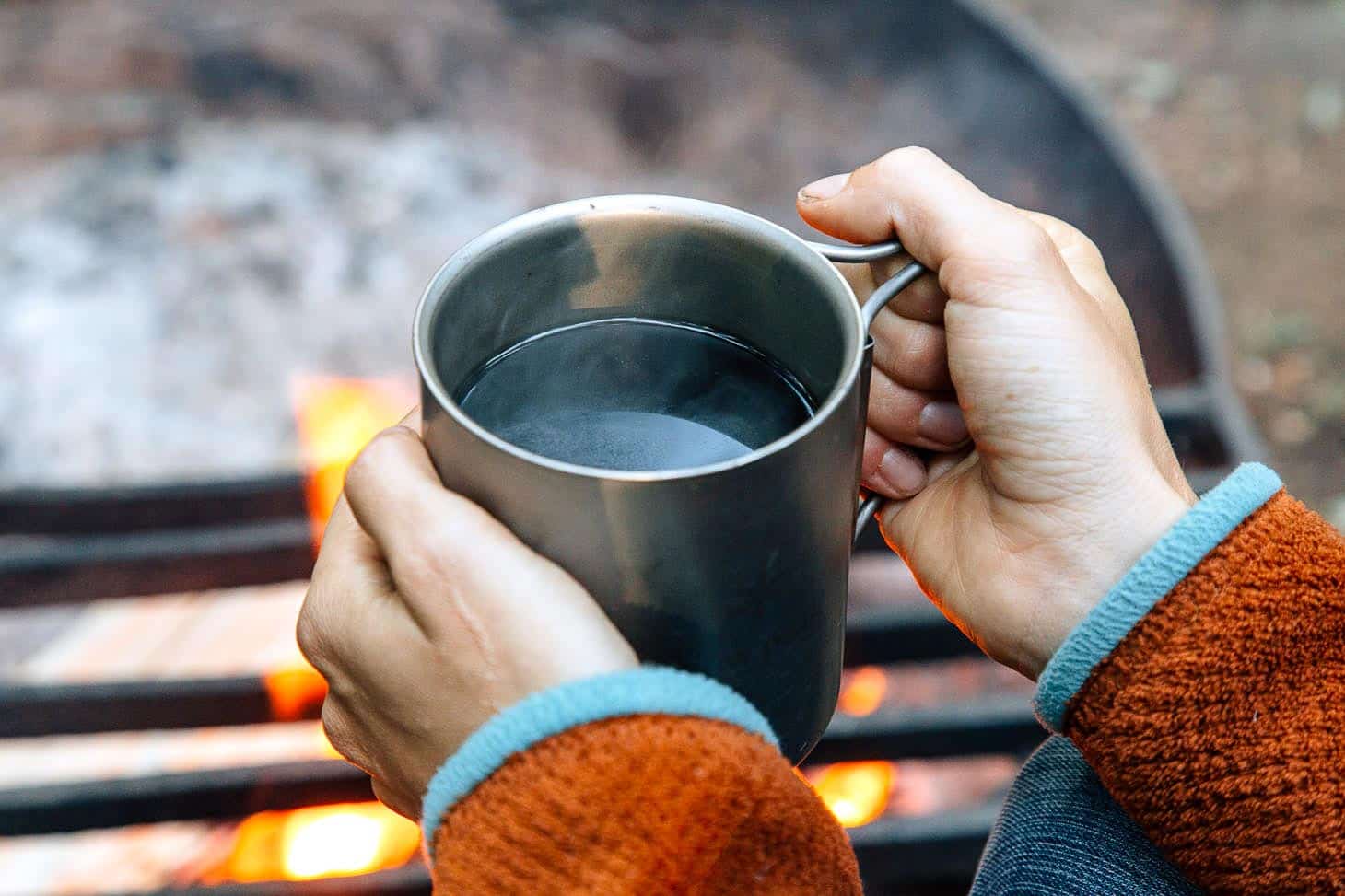Planning a dry camping trip isn’t always easy.
From finding a quality campsite to figuring out how you’re going to get water, dry camping can be a challenging, yet rewarding endeavor. However, we want you to have the best possible time while you’re outside, which is why we’ve created this dry camping guide for beginners.
Up next, we’ll discuss everything you need to know about dry camping, from campsite selecting to must-have pieces of gear, to get you started.
Page Contents
What is dry camping?
Dry camping is any type of overnight outdoor adventure where you sleep far from a water source.
Unlike regular camping, dry camping – or boondocking as it’s called in the RV and campervan community – requires that you bring water to your campsite for drinking, washing, and other necessities.
Other than that, dry camping isn’t overwhelmingly different from any other type of camping. But, ensuring that you have enough water to last for your entire adventure is essential, so careful planning is a must for anyone looking to go dry camping.
Why you should dry camp?
At first glance, it might not make much sense.
Why would anyone want to go dry camping when they could camp near water, instead?
Well, there are actually quite a few advantages to dry camping when compared to regular camping.
Here are some of the top reasons why you should dry camp :
- Flexibility in campsite choice. When you decide to go dry camping, you immediately free yourself from the need to camp in a specific area near a body of water or in a campground with hookups. Doing so allows you to choose nearly any campsite you’d like and it makes it possible for you to venture into arid areas like deserts for more of an adventure.
- Affordability. If you’re planning on dry camping at a designated campsite, you’ll generally find that choosing a campground without water nearby is the cheaper option. This is particularly true in dry desert areas, like Joshua Tree National Park, where choosing to stay in one of the dry campgrounds is usually the more affordable choice.
- Extra solitude. Most campers, if given the choice, opt to pitch their tent near a water source because it’s more convenient. However, if you’re willing to venture off the beaten path to a dry campsite, you’ll often find that you can enjoy more solitude and a better nature experience than you might if you were at a non-dry camping destination.
- Easier access to campsites. In highly popular camping destinations, such as Death Valley National Park, you’ll generally have much better luck snagging a tent site at a campground without water than at one with hookups. Therefore, if you’re planning a last-minute camping trip or you’re not interested in dealing with the hassle of reservations and lotteries, a dry campsite might be the way to go.
- Better for wildlife. Leave No Trace principles and local land managers often require that we camp at least 200 feet (60m) from water in order to protect wildlife and ensure that we don’t impede their access to essential water sources. So, dry camping away from lakes, rivers, and streams is often better for wildlife in our favorite outdoor recreation destinations.
Where can I dry camp?
The best part about dry camping is that you can do it on nearly any area of public land where there are campgrounds without water or where dispersed camping is allowed.
This includes national and state parks, national forests, national monuments, national wildlife refuges, BLM land, and the like.
Of course, you’ll always want to check local regulations before you leave home, but most land managers are actually more concerned about people camping too close to water than they are about dry campers.
It’s important to note, however, that you can’t just pull over on the side of the road and dry camp wherever you want.
Instead, you need to be sure that you’re camping on public land where dispersed camping away from a campground is allowed and that there are no restrictions about where you can camp in the backcountry.
Also, if you’re planning on dry camping in popular locations or in wilderness areas, you may still need a camping permit.
With that in mind, if you’re looking for good national parks to go dry camping, some solid options include :
- Canyonlands National Park. Much of the more remote parts of Canyonlands, especially in The Maze and The Needles Districts is prime for dry camping.
- Bryce Canyon National Park. Some of the backcountry campsites in Bryce Canyon are water-free, so you’ll need to pack your own.
- Grand Canyon National Park. Unless you plan to camp near the Colorado River, much of the backcountry camping in Grand Canyon is in sites that are far from water.
In many of these national parks, you can either stay at campgrounds that don’t have running water or you can get a permit to go to a backcountry campsite that’s also far from water sources.
For the most part, dry campsites tend to be less popular in national parks, so they can be a great way to enjoy these beautiful areas without sacrificing your ability to get solitude while outside.
Read More : The Popular and Free Camping Areas in Maine
How to pick the ideal dry camping site?
Since dry camping involves camping away from a reliable water source, you can find dry campsites in nearly every park or recreation area. However, just because you can dry camp somewhere doesn’t mean that that’s the perfect campsite for your needs.
Here are some of our top tips for selecting an ideal dry campsite on your next adventure :
Understand your comfort level
The most important thing to consider when picking an ideal dry campsite is your own comfort and experience level.
If you’re new to camping in general or it’s your first time dry camping, choosing a campsite that requires a 20 mile (32km) hike to get to perhaps isn’t the most reasonable option.
Instead, for your first few dry camping trips, consider choosing a site that’s closer to the road.
Read More : 10 Ways to Make Tent Camping More Comfortable
Know where you can get water
Even though dry camping is all about adventuring in locations where you don’t have a reliable water source, knowing where you can get water if you need it is important.
Therefore, as you search for potential dry campsites, do a bit of research about where you can get water if you run out or if there’s an emergency.
Potential options include neighboring campsites or perennial springs that might be marked on a topographical map.
Check national park and forest service websites
If you’re looking for popular and well-established dry campsites, national parks and national forest service websites are usually a good place to start.
Most parks and forests that allow camping will have a list of all of their campgrounds and backcountry campsites. These lists will usually also list whether or not that campsite has water, making them a powerful planning tool for future dry campers, just like yourself.
Read More : The Popular and Free Camping Areas in Tennessee
Dry camping essentials
Going dry camping requires that you have all the gear you need to be fully self-sufficient while you’re outside. As a result, you’ll need to come prepared with the right gear for your adventures.
Here are some must-bring items for your future dry camping trips.
- Water bottles. If you’re going dry camping, you’ll need a way to carry and transport your water. Water bottles are a solid choice for most short camping trips but don’t be afraid to supplement your water bottles with larger water storage containers, like jerry cans.
- Stoves. A stove is a must-have piece of gear for dry backpacking because it allows you to boil water to purify it if you happen to come across a stream or body of water during your hike.
- Cookware. In addition to a stove, you’ll want some camping cookware in your gear list to ensure that you have a way to boil water to purify it when you’re in a remote environment.
- Coolers. If you’re dry camping, you’ll want to reduce your non-essential water consumption as much as possible. Therefore, instead of using freeze-dried or dehydrated meals, which require a lot of water to cook, consider filling a cooler with regular food items that don’t use a lot of water.
- Ice packs. Should you opt to bring a cooler while dry camping to reduce your water consumption, bringing reusable ice packs on your trip can help keep your food fresh for as long as possible.
How to have enjoyable dry camping experience
Dry camping can be a truly wonderful way to enjoy the great outdoors. But, ensuring that you have an excellent dry camping experience requires a bit of pre-planning so that you always have water when you need it.
Consider these dry camping tips when planning your next trip.
Bring more water than you need
While packing extra water might not be ideal in terms of the amount of space that you have in your car or your backpack, you certainly don’t want to run out of water during your trip.
Therefore, it’s essential that you pack more water than you think you need for your adventures. At a minimum, you should plan for 1.5 gallons (5.6L) of water per person per day.
Read More : How Much Water Should You Bring to Camping?
Be cautious in hot environments
Some of the most popular dry camping locations are in hot, arid locales, like the desert southwest region of the United States. However, dry camping in these environments requires that you pay a lot of attention to your health and well-being to ensure that you don’t get dehydrated or run out of water.
Therefore, in very hot environments, think about increasing your water supply to at least 2 gallons (7.5L) of water per person per day.
Collect water as you hike
If you’re going backpacking and you plan to stay at dry campsites, try to collect water from streams and lakes as you hike. Sure, there may not be any water at your campsite, but if there are water sources along the way to your destination, collecting water as you go can help you keep your pack weight at a minimum.
Read More : How to Purify and Treat Water While Camping
Consider hydration supplements
Going dry camping inherently requires having to ration your water intake, but sometimes, people inadvertently over-ration. That means that they accidentally limit their water consumption so much that they become dehydrated.
A good way to ensure that your body is still getting enough electrolytes, even when you have limited water resources is to pack some hydration supplements, like electrolyte tablets, sports gels, and the like.
Invest in quality water containers
If you’re going dry camping, the last thing you want is to discover that your water container burst open and spilled all your water. Such a situation can be dangerous, so avoiding water spills at all costs should be a top priority.
To do so, invest in quality water containers, whether that’s a durable water bottle, a burly water bag, or a set of jerry cans. Whatever you choose, be sure to inspect your gear before you head outside to ensure that it’s in good working order before you trust it to hold your precious water.
Oh, and if you opt for soft-sided water bottles or storage containers, be sure to bring a puncture repair kit, just in case.
Recommended Reads :
Gaby Pilson
Gaby is a professional mountain guide with a master’s degree in outdoor education. She works primarily in the polar regions as an expedition guide, though she can be found hiking, climbing, skiing, sailing, or paddling in some of the world’s most amazing places when not at work.


